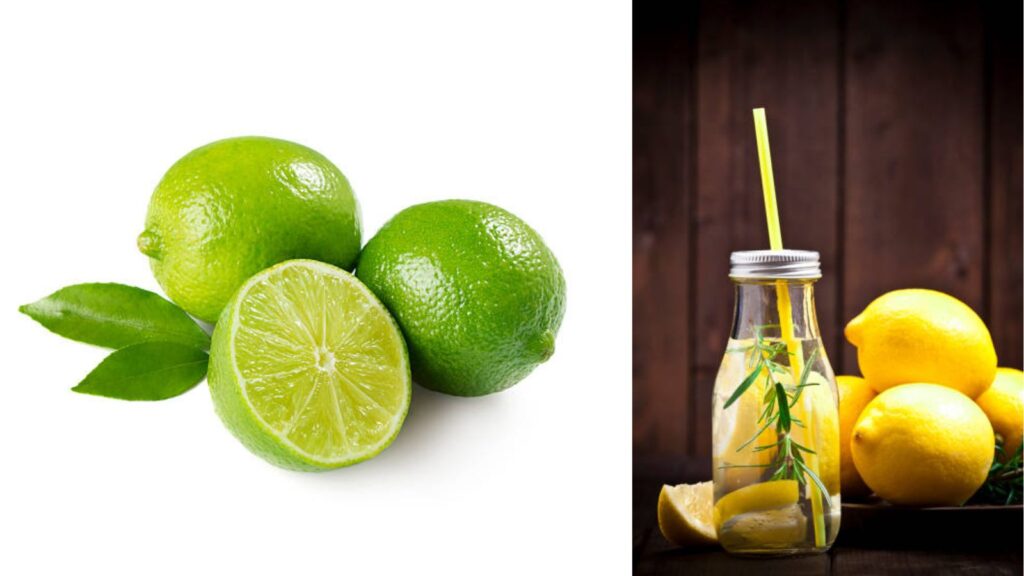Lime vs Lemon: How to Tell the Difference

Lime vs Lemon: Have you ever found yourself wondering what actually sets limes and lemons apart? They often look similar, taste quite alike, and are used interchangeably in many recipes. Yet, these two citrus fruits are not the same. Let’s take a closer look at how limes and lemons differ in appearance, taste, and nutrition.
Limes and lemons are both members of the citrus fruit family, which also includes oranges and tangerines. Their similar sour taste and tangy aroma often lead to confusion. However, they vary in colour, size, flavour, and even nutrient composition. For example, limes generally have a sharper, more acidic taste, while lemons are milder and slightly sweet. Both owe their tanginess to citric acid, which is found in good amounts in each.
India, China, and Mexico are among the top producers of limes and lemons, together supplying hundreds of thousands of tonnes of these fruits every year. Now, let’s break down the key differences between the two.
1. Colour
The most noticeable difference between lime and lemon is their colour. Lemons are bright yellow when ripe, whereas limes remain green even at full maturity. Unripe lemons may appear green, but they turn yellow as they ripen, making colour a clear way to tell them apart.
2. Shape and Size
Lemons are generally larger and more oval-shaped, while limes are smaller and round. Their taste also varies slightly—lemons are a bit sweeter and less acidic, whereas limes have a sharper, tangier flavour.
3. Skin Texture
Lemons have a thicker, slightly rough skin, while limes have a smoother and thinner peel. This difference also affects how easily each fruit can be juiced or zested.
4. Taste and Culinary Uses
Limes are more sour and commonly used in savoury dishes and drinks like guacamole, mojitos, or margaritas. Lemons, being milder, are versatile—they’re used in both sweet and savoury recipes. From lemon tarts and lemon tea to salads and marinades, their uses are endless. Still, there are no strict rules, and both fruits can often substitute for each other depending on the dish.
5. Nutritional Value
Nutritionally, both fruits are quite similar. They contain small amounts of carbohydrates, proteins, and fats while being rich in vitamin C. However, lemons generally provide a bit more vitamin C, potassium, folate, and vitamin B6 compared to limes.
The chemical compound that gives both fruits their sour taste—citric acid—has the formula C6H8O7.
The Bottom Line
Both lemons and limes are healthy citrus fruits packed with essential vitamins and minerals. While lemons are yellow, oval, and slightly sweet, limes are green, smaller, and more tart. Each has its own distinct role in cooking, beverages, and health benefits.
Next time you see them side by side, you’ll know exactly which is which—and how to make the best use of both.









